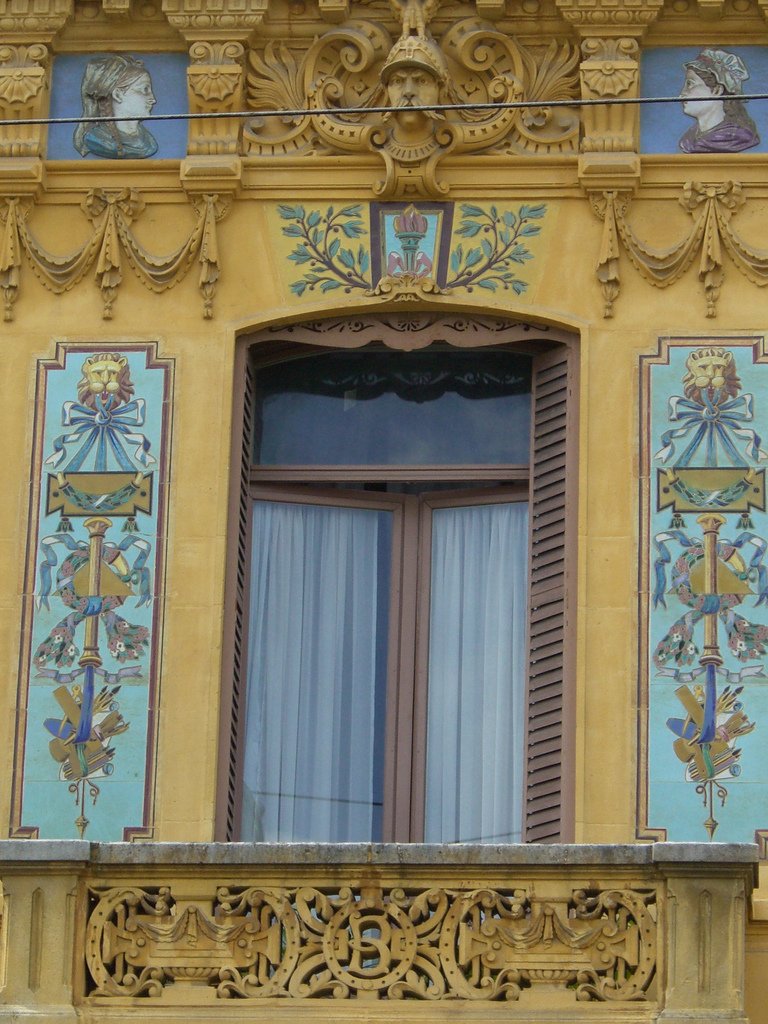#4710. Elegant Classical Facade with Polychrome Decoration and Heraldic Elements
The photograph captures a magnificent fragment of a historical building facade in the neoclassical or Art Nouveau style with evident influence from Mediterranean architectural traditions. The main focus of the composition is an elegantly decorated window with wooden shutters and light curtains, framed by rich decorative elements.
The facade is finished in a warm yellowish-ochre color, characteristic of Southern European architecture. On both sides of the window are vertical decorative panels with a blue background featuring symmetrically placed ornamental motifs — stylized lion masks, columns, and classical symbols. These panels have a clear structure and appear to be executed in majolica or ceramic tile technique.
The upper part of the composition is adorned with a molded pediment with a central medallion in the form of a stylized helmeted head — possibly representing Minerva or another classical deity. On either side of the central decorative element, female profiles in classical style are placed against a blue background. Below the window is a decorative carved balustrade with intricate ornamentation and what appears to be a monogram or heraldic symbol.
The facade derives special value from the filigree elaboration of decorative elements — garlands, floral motifs, and classical ornaments, which testifies to the high craftsmanship of the executors and the significance of the building. Above the window is a coat of arms or emblem, framed by floral ornaments, which adds ceremonial quality and heraldic symbolism to the composition.
